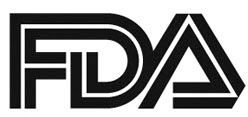FDA Advisory Committee Supports Tazemetostat for Treatment of Epithelioid Sarcoma
In a unanimous vote, the Oncologic Drugs Advisory Committee of the FDA is in favor of the benefit-risk profile of tazemetostat for the treatment of patients with metastatic or locally advanced epithelioid sarcoma who are not eligible for curative intent surgery, according to a press release from Epizyme, Inc., manufacturer of the drug.

In a unanimous vote, the Oncologic Drugs Advisory Committee (ODAC) of the FDA is in favor of the benefit-risk profile of tazemetostat for the treatment of patients with metastatic or locally advanced epithelioid sarcoma (ES) who are not eligible for curative intent surgery, according to a press release from Epizyme, Inc., manufacturer of the drug.
The New Drug Application (NDA) for tazemetostat is currently under priority review by the FDA. The target action date is January 23, 2020. The NDA was submitted based on phase II data that were presented at the 2019 American Society of Clinical Oncology (ASCO) Annual Meeting.
“Today’s ODAC outcome is a significant step toward addressing the critical needs of ES patients,” said Robert Bazemore, president and chief executive officer of Epizyme. “If approved, we will have the opportunity to change how patients with this devastating cancer are treated..”
The investigational, oral, first-in-class EZH2 inhibitor demonstrated an overall response rate (ORR) of 15% (n = 9) among the 62 patients with ES in the ongoing phase II trial (NCT02601950), all of whom had confirmed partial responses. The disease control rate was 26%, and the median duration of response had not yet been reached (range, 7.1+ to 103+ weeks). The median overall survival was 82.4 weeks (95% CI, 47.4 to not estimable).
According to the findings presented at the 2019 ASCO Annual Meeting, the most common adverse events (AEs) of any grade included fatigue (39%), nausea (35%), and cancer pain (32%). Ten patients (13%) experienced grade 3 or greater treatment-emergent AEs, which included anemia (6%), and decreased weight (3%). The rate of treatment discontinuation was 1.7%. No deaths occurred that were related to treatment.
The multicenter, open-label trial enrolled 62 patients with locally advanced or metastatic ES who had tumors that lacked INI1 expression. Patients received a median of 1 prior therapy (range, 0-9). Tazemetostat was administered at 800 mg twice daily on a 28-day cycle.
To be included in the trial, patients must have an ECOG performance status of0, 1, or 2and a life expectancy of at least 3 months. They also had to have a malignancy for which no standard therapies are available or be relapsed/refractory after approved therapies, having progressed within 6 months prior to study enrollment. Patients who had previously received treatment with the EZH2 inhibitor or others were excluded from the trial.
The rare and aggressive soft tissue sarcoma is characterized by the loss of the INI1 protein. Most frequently, patients are diagnosed between the age of 20 and 40 years old, and patients rarely live beyond 5 years of their initial diagnosis of ES. The disease is known to become more aggressive after recurrence or once it has metastasized, wherein the survival is typically 1 year or less for metastatic disease.
“We are incredibly pleased by ODAC’s unanimous support of the benefit-risk of tazemetostat in ES, and we appreciate the tremendous support received from sarcoma physicians and their medical teams, advocates, caregivers and most notably, patients with ES,” said Shefali Agarwal, chief medical officer of Epizyme. “We believe the strength of the totality of data, including the observed durable responses and stabilization of disease, safety and tolerability, are distinguishing characteristics of tazemetostat for patients living with this disease.”
Reference:
Epizyme Announces FDA Advisory Committee Votes Unanimously in Favor of Tazemetostat for the Treatment of Patients with Epithelioid Sarcoma [press release]. Cambridge, MA: Business Wire; December 18, 2019. https://bwnews.pr/2Z0RG7g. Accessed December 18, 2019.
mRNA-4157 Plus Pembrolizumab Continues to Improve RFS in High-Risk Melanoma
December 18th 2023Findings from 3-year follow-up of KEYNOTE-942/mRNA-4157-P201 show that the cancer vaccine mRNA-4157 plus pembrolizumab reduced the risk of recurrence or death in patients with stage III/IV melanoma following resection.
Read More
Managing Expectations of Treatment for Infiltrative Basal Cell Carcinoma
November 10th 2023In an event comoderated by Michael K. Wong, MD, PhD, FRCPC, and Anokhi Jambusaria, MD, MSCE, the 2 key opinions leaders discussed the hypothetical patient case of an 88-year-old man with a nonhealing ulcer on the lateral aspect of his nose who received a diagnosis of infiltrative basal cell carcinoma.
Read More